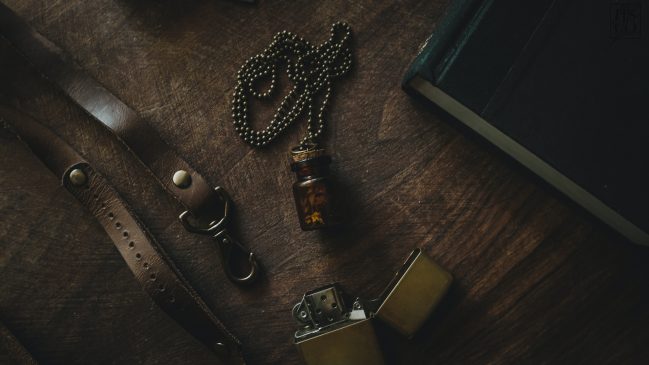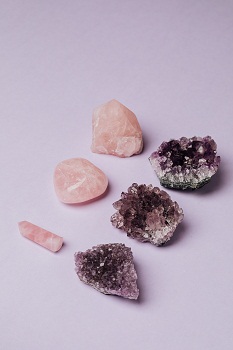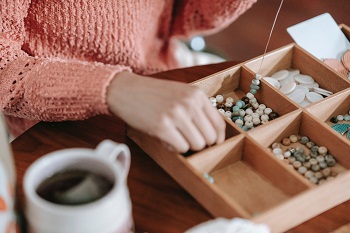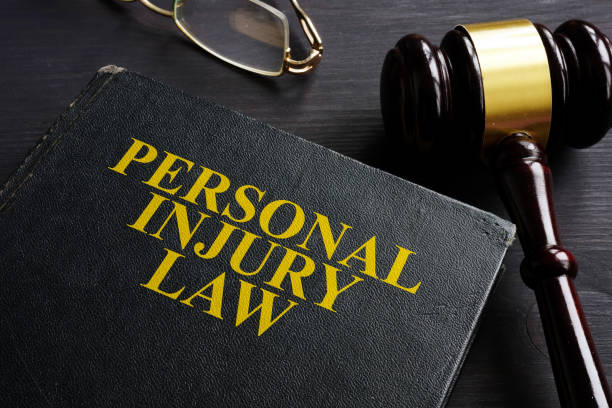
Outline
1. Introduction
2. Understanding the Value of Jewelry, Art, and Collectibles
– Factors that Determine Value
– Rarity and Desirability
– Condition and Authenticity
– Historical Significance and Provenance
3. Appraisal and Evaluation Methods
– Professional Appraisers
– Online Valuation Tools
– Comparative Market Analysis
– Insurance Company Evaluation
4. Determining Replacement Value
– Market Value vs. Replacement Value
– Factors to Consider
– Materials and craftsmanship
– Brand reputation
– Current market trends
– Getting Multiple Appraisals
5. Insurance Coverage Options
– Homeowner’s Insurance
– Scheduled Personal Property Coverage
– Standalone Valuables Insurance
6. Documenting Your Valuables
– Detailed Descriptions
– Photographs and Videos
– Certificates of Authenticity and Appraisals
7. Maintaining and Protecting Your Valuables
– Safe Storage
– Regular Maintenance
– Security Systems and Alarms
– Proper Handling and Transportation
8. Reevaluating and Updating Coverage
– Regular Appraisals
– Changes in Value and Market Conditions
– Policy Limit Adjustments
9. Conclusion
10. FAQs
Introduction
In a world where unforeseen events can occur, it’s essential to protect your valuable possessions, such as jewelry, art, and collectibles. While these items may hold significant sentimental value, they can also carry substantial financial worth. Insuring your valuables not only provides you with peace of mind but also ensures that you can recover their value in case of loss, theft, or damage. However, determining the accurate cost of your valuables can be a complex task. This article will guide you through the process of calculating the cost of your jewelry, art, and collectibles, helping you make informed decisions when it comes to insuring them.
Understanding the Value of Jewelry, Art, and Collectibles
Before diving into the intricacies of insuring your valuables, it’s crucial to understand what factors contribute to their value. The value of jewelry, art, and collectibles is influenced by various elements, including rarity, desirability, condition, authenticity, historical significance, and provenance.
Factors that Determine Value
When assessing the value of jewelry, art, and collectibles, several key factors come into play. These factors include the item’s age, quality, craftsmanship, brand reputation, and any unique features or characteristics it possesses. Understanding these aspects will help you determine the appropriate level of insurance coverage.
Rarity and Desirability
Items that are rare or highly sought-after tend to have higher values. Rarity often leads to increased desirability among collectors, enthusiasts, or individuals passionate about a particular category of valuables. The scarcity of certain materials, limited production runs, or historical significance can significantly impact the value of these items.
Condition and Authenticity
The condition of your valuables plays a significant role in their value. Items in excellent condition, with minimal wear and tear or restoration, typically hold higher value compared to those with damage or signs of aging. Additionally, verifying the authenticity of your valuables through expert examination or proper documentation is crucial in accurately assessing their worth.

Historical Significance and Provenance
Valuables with notable historical significance or a compelling provenance often command higher prices. Historical significance refers to items that have played a significant role in a particular era, event, or cultural context. Provenance, on the other hand, refers to the documented history of ownership,
which can enhance the value and desirability of your valuables.
Appraisal and Evaluation Methods
To determine the cost of your jewelry, art, and collectibles, you can employ various appraisal and evaluation methods. These methods help establish the fair market value or replacement value of your valuables.
Professional Appraisers
Engaging the services of a professional appraiser specializing in the type of valuables you possess is an excellent way to obtain an accurate assessment. Appraisers utilize their expertise, industry knowledge, and access to market data to evaluate your items thoroughly. They consider factors such as rarity, condition, provenance, and market demand when determining value.
Online Valuation Tools
Numerous online valuation tools are available that can provide initial estimates for your valuables. While these tools can offer a convenient starting point, keep in mind that they may not provide the most accurate representation of value. They often rely on general data and algorithms and may not consider specific nuances related to your items.
Comparative Market Analysis
A comparative market analysis involves researching recent sales data for similar items in the marketplace. This method provides insights into the current market value of your valuables. Online platforms, auction catalogs, and galleries specializing in the relevant category can be valuable resources for gathering this information.
Insurance Company Evaluation
If you already have insurance coverage for your valuables, your insurance company may evaluate their worth as part of the policy agreement. However, it’s essential to be cautious with this method, as insurance companies may have their own agenda in determining value. It’s advisable to supplement their evaluation with additional appraisals to ensure an accurate assessment.
Determining Replacement Value
When insuring your jewelry, art, and collectibles, it’s crucial to understand the concept of replacement value. Replacement value refers to the amount of money required to replace an item with a similar one of equal quality, craftsmanship, and condition in the current market. It’s different from market value, which represents the amount an item would sell for in the marketplace.
Market Value vs. Replacement Value
While market value considers the current demand and supply dynamics, replacement value accounts for the cost of acquiring a comparable item. Insurance companies typically use replacement value as the basis for determining coverage limits and payouts in case of a claim. To ensure you have adequate coverage, focusing on replacement value is essential.
Factors to Consider
Several factors influence the replacement value of your valuables. These factors include the materials used, level of craftsmanship, brand reputation, and prevailing market trends.
Materials and Craftsmanship
The materials used in creating your jewelry, art, or collectible items contribute significantly to their value. Precious metals, gemstones, high-quality paints, or unique materials often command higher prices. Additionally, the level of craftsmanship and the skill involved in creating the item also affect its value.
Brand Reputation
In some cases, the brand reputation associated with your valuables can influence their value. Items from renowned brands or artists may have higher market demand and, consequently, higher replacement values. The reputation and prestige of the brand can contribute to the desirability and worth of the item.
Current Market Trends
Market trends play a vital role in determining the replacement value of your valuables. The popularity of specific styles, artists, or collectible categories can fluctuate over time. Staying informed about current market trends helps you assess whether the value of your items is likely to appreciate or depreciate.
Getting Multiple Appraisals
To ensure accuracy in determining the replacement value of your valuables, it’s advisable to obtain multiple appraisals. Seeking opinions from different reputable appraisers can provide you with a broader perspective and help identify any discrepancies. Having a consensus among experts can instill confidence in the assessed value of your items.
Insurance Coverage Options
Once you have calculated the cost of your jewelry, art, and collectibles, it’s important to explore the insurance coverage options available to protect them adequately. Several insurance options cater specifically to valuables.
Homeowner’s Insurance
Homeowner’s insurance typically includes coverage for personal property, including jewelry, art, and collectibles. However, the coverage limits for these items may be relatively low, and specific perils, such as accidental damage, may not be fully covered. Review your homeowner’s insurance policy to understand the extent of coverage and consider additional options if necessary.
Scheduled Personal Property Coverage
Scheduled personal property coverage, also known as itemized coverage or a personal articles floater, provides more comprehensive protection for your valuables. This coverage allows you to specifically list and insure individual items at their appraised or declared values. It often offers broader coverage, including accidental damage and even loss outside the home.
Standalone Valuables Insurance
Standalone valuables insurance policies are designed explicitly for high-value items such as jewelry, art, and collectibles. These policies offer comprehensive coverage tailored to the specific needs of your valuables. They often provide higher coverage limits, cover a broader range of perils, and may include options for worldwide coverage and restoration or replacement by specialized craftsmen.
Documenting Your Valuables
Maintaining detailed documentation of your valuables is crucial when it comes to insuring them effectively. Proper documentation helps establish the existence, condition, and value of your items, simplifying the claims process in case of loss or damage.
Detailed Descriptions
Create comprehensive descriptions of each valuable item, including information such as dimensions, materials, unique features, and any distinguishing marks or engravings. The more detailed and specific your descriptions, the easier it becomes to identify and replace your items accurately.
Photographs and Videos
Accompany your written descriptions with clear and high-quality photographs or videos of your valuables. Capture images from different angles to provide a comprehensive visual record. Photograph any distinct markings, signatures, or intricate details that contribute to the value and authenticity of the item.
Certificates of Authenticity and Appraisals
If your valuables come with certificates of authenticity, appraisals, or other supporting documents, keep them safely organized. These documents serve as evidence of the item’s provenance, authenticity, and appraised value. Make copies of these documents and store them in a secure location separate from the items themselves.
Maintaining and Protecting Your Valuables
To ensure the longevity and preservation of your jewelry, art, and collectibles, it’s important to take appropriate measures for their maintenance and protection. By implementing proper storage, regular maintenance, and security measures, you can safeguard your valuables from potential risks.
Safe Storage
Store your valuables in a secure location that minimizes exposure to potential hazards. Consider investing in a home safe or renting a safety deposit box at a reputable bank. Ensure the storage area is climate-controlled, free from excessive moisture, and protects against fire, theft, and other potential risks.
Regular Maintenance
Maintain the condition of your valuables by following recommended cleaning and maintenance practices. Jewelry may require periodic inspections and cleanings by a professional jeweler to prevent damage or loss of gemstones. Art and collectibles may require conservation treatments or specific display conditions to prevent deterioration.
Security Systems and Alarms
Implementing security systems and alarms in your home adds an extra layer of protection for your valuables. Surveillance cameras, motion sensors, and alarms act as deterrents and can alert you or security personnel in case of a potential break-in or threat.
Proper Handling and Transportation
Exercise caution when handling and transporting your valuables, especially when moving or loaning them for exhibitions or events. Use appropriate
packing materials, such as padded boxes or specialized cases, to protect against potential damage during transit. Consider seeking professional assistance for larger or particularly delicate items.
Reevaluating and Updating Coverage
The value of your jewelry, art, and collectibles may change over time due to market fluctuations, wear and tear, or acquisition of new items. It’s important to reevaluate and update your insurance coverage periodically to ensure adequate protection.
Regular Appraisals
Periodically reassess the value of your valuables by obtaining updated appraisals from reputable experts. Consider conducting appraisals every few years or when significant changes occur in the market or the condition of your items. Appraisals provide the necessary documentation to adjust your insurance coverage accordingly.

Changes in Value and Market Conditions
Stay informed about changes in the value and market conditions of your valuables. Monitor trends, sales records, and auction results to gauge how these factors impact the worth of your items. If you notice significant changes, consult with your insurance provider to reassess and adjust your coverage limits accordingly.
Policy Limit Adjustments
Based on the appraised value of your valuables, review the coverage limits specified in your insurance policy. Ensure the limits adequately reflect the replacement value of your items. If necessary, request adjustments to your policy limits to avoid being underinsured or overinsured.
Conclusion
Insuring your valuable possessions such as jewelry, art, and collectibles requires careful consideration and accurate valuation. By understanding the factors that determine value, utilizing appraisal methods, determining replacement value, and choosing appropriate insurance coverage, you can protect your valuables effectively. Remember to document your items, maintain and protect them diligently, and regularly review and update your insurance coverage to ensure comprehensive protection for your precious possessions.
FAQs
1. What is the difference between market value and replacement value?
Market value represents the price an item would sell for in the marketplace, considering supply and demand dynamics. Replacement value, on the other hand, refers to the cost of acquiring a similar item in the current market. Insurance companies typically use replacement value as the basis for coverage and claim payouts.
2. How often should I get my valuables appraised?
It’s advisable to get your valuables appraised every few years or when significant changes occur in the market or the condition of your items. Regular appraisals ensure that your insurance coverage accurately reflects the current value of your valuables.
3. Can I rely on online valuation tools for accurate assessments?
Online valuation tools can provide initial estimates for your valuables, but they may not offer the most accurate representation of value. They often rely on general data and algorithms and may not consider specific nuances related to your items. It’s recommended to supplement online tools with appraisals from professional experts.
4. Is homeowner’s insurance enough to cover my valuable items?
Homeowner’s insurance typically includes coverage for personal property, including jewelry, art, and collectibles. However, the coverage limits for these items may be relatively low, and specific perils may not be fully covered. Review your homeowner’s insurance policy and consider additional coverage options if necessary.
5. How can I protect my valuables from damage or theft?
Proper storage, regular maintenance, and security measures can help protect your valuables. Invest in a secure storage location, follow recommended maintenance practices, and consider implementing security systems and alarms in your home. Additionally, exercise caution when handling and transporting your valuables to minimize the risk of damage or loss.




